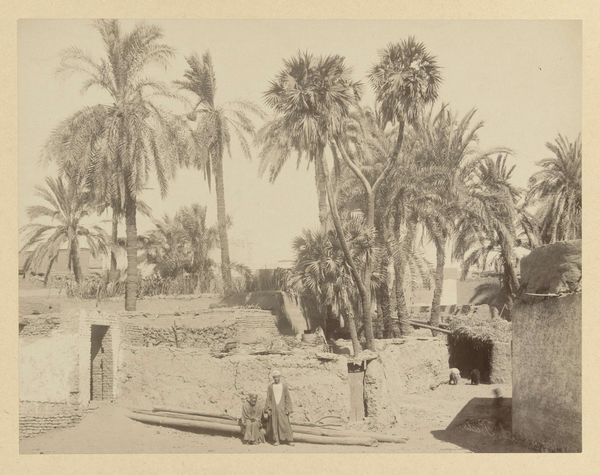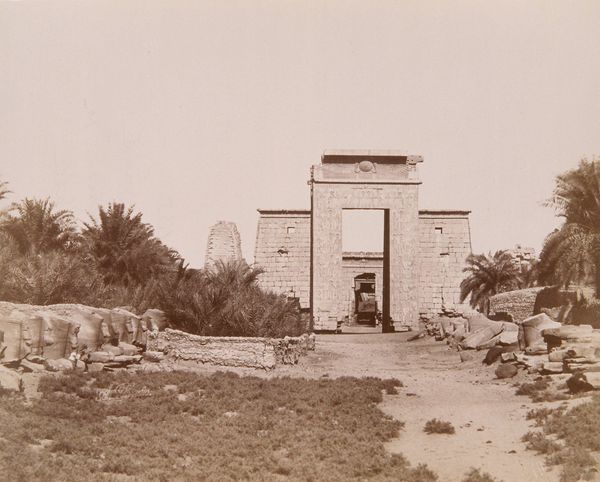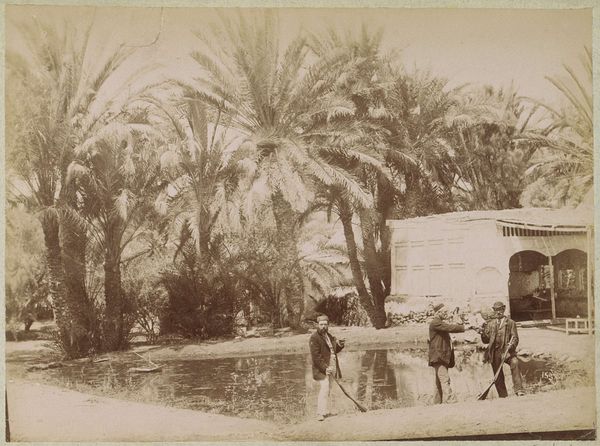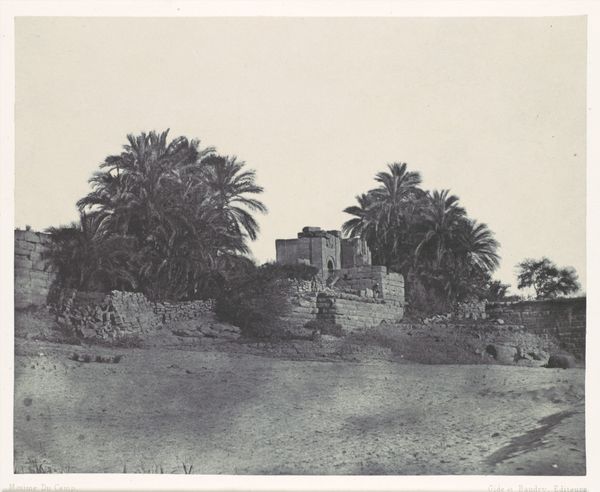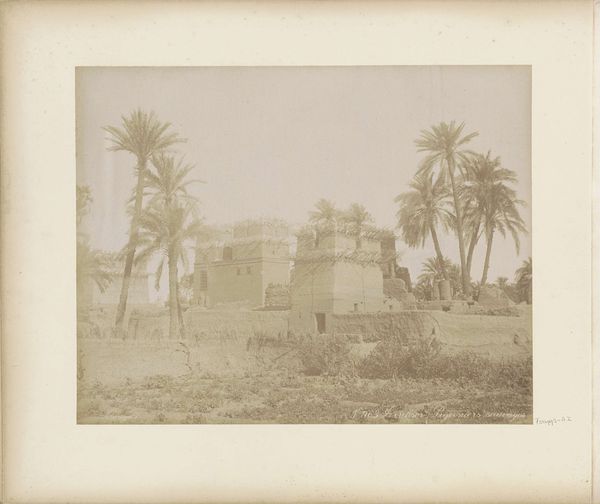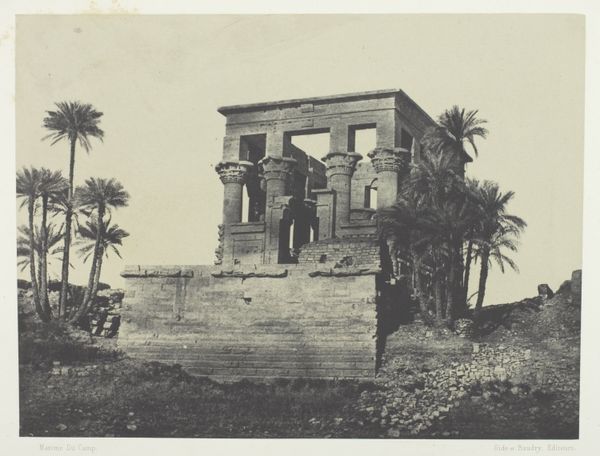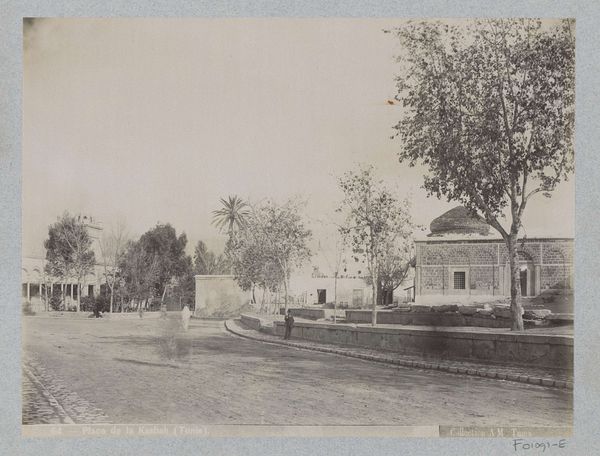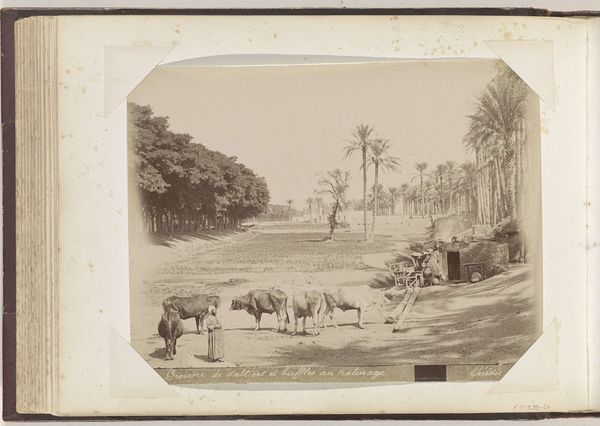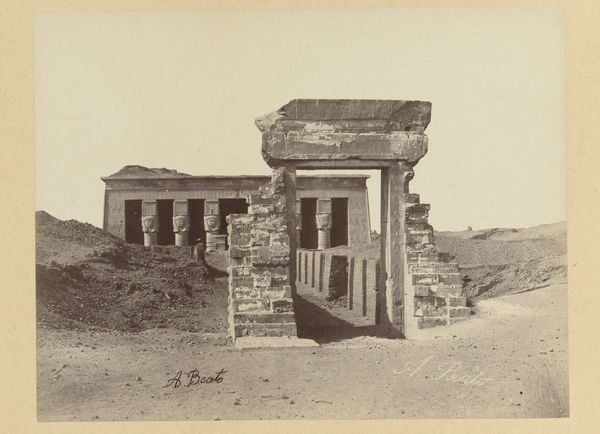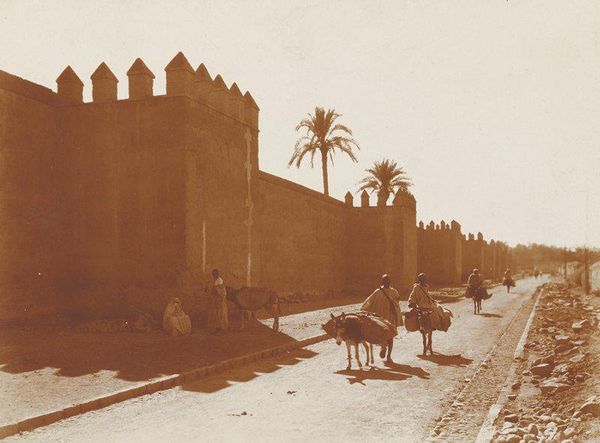
#
picture layout
#
black and white photography
#
photo restoration
#
digital photo altering
#
low atmospheric-weather contrast
#
old-timey
#
monochrome photography
#
photo layout
#
19th century
#
vignette lighting
Dimensions: height 200 mm, width 256 mm, height 466 mm, width 555 mm
Copyright: Rijks Museum: Open Domain
Curator: Welcome. We're standing before Antonio Beato’s photograph, "Tempel van Karnak," taken between 1862 and 1895. The photograph is held in the collection of the Rijksmuseum. Editor: It’s strikingly desolate, isn't it? The monochrome palette really emphasizes the monumentality of the temple against the sky and what appears to be an empty foreground. Curator: Absolutely. Beato’s use of monochrome draws attention to the architecture. The light, almost uniformly distributed, highlights the shapes and the textures of the stone. Observe how the composition is carefully arranged, with the temple positioned centrally. Editor: But what about those figures to the side? It’s hard to miss their quiet observation. How does their presence play with our understanding of colonization and representation within these visual landscapes? There's such a charged dynamic between observer and observed, don’t you think? Curator: Undeniably. The inclusion of those figures, as well as the line of trees to the left, introduces a play between scale and form, heightening our perception. There’s a beautiful dance between light and shadow. The frame becomes a carefully designed system, reflecting both depth and surface qualities. Editor: Though let's not romanticize that so-called "dance." We must acknowledge Beato’s role in perpetuating a certain gaze – a Western interpretation that reduces cultures and complex histories to aesthetic spectacle, especially within an Egyptian context. The people, the culture – are we actually engaging with it or simply consuming its image? Curator: It’s vital we examine these historical implications, and the visual composition in itself remains a complex interplay between form and historical record. How can we use our structural analysis of form and photographic development to expand discussions of colonial photography? Editor: Precisely. The enduring dialogue between art history and current theory is crucial to revealing multiple layers. As we grapple with legacies, this piece opens space for reflections. Curator: Indeed. Approaching artworks from different vantages not only enriches our perspectives, but expands the nature of analysis itself. Editor: Couldn't agree more.
Comments
No comments
Be the first to comment and join the conversation on the ultimate creative platform.
